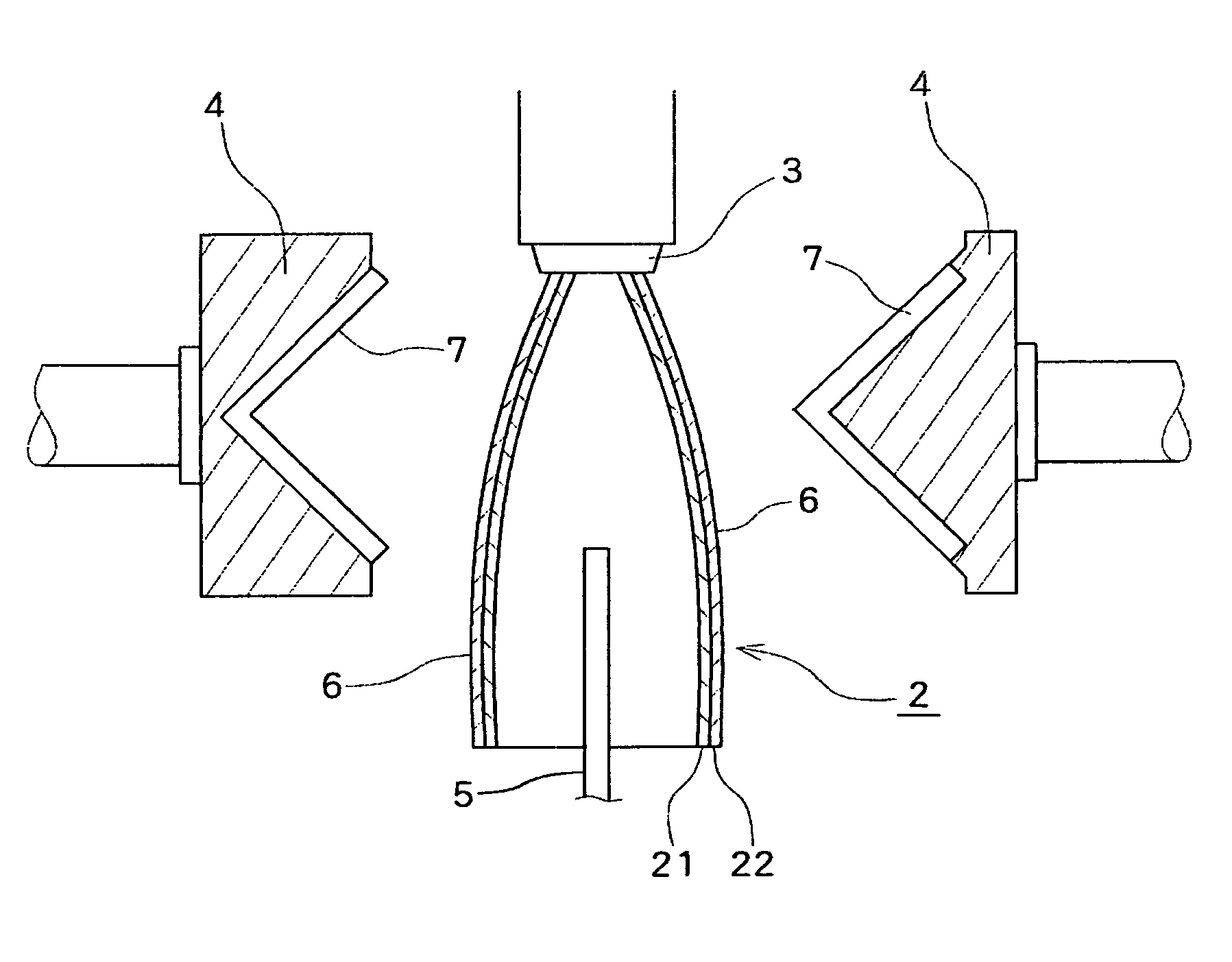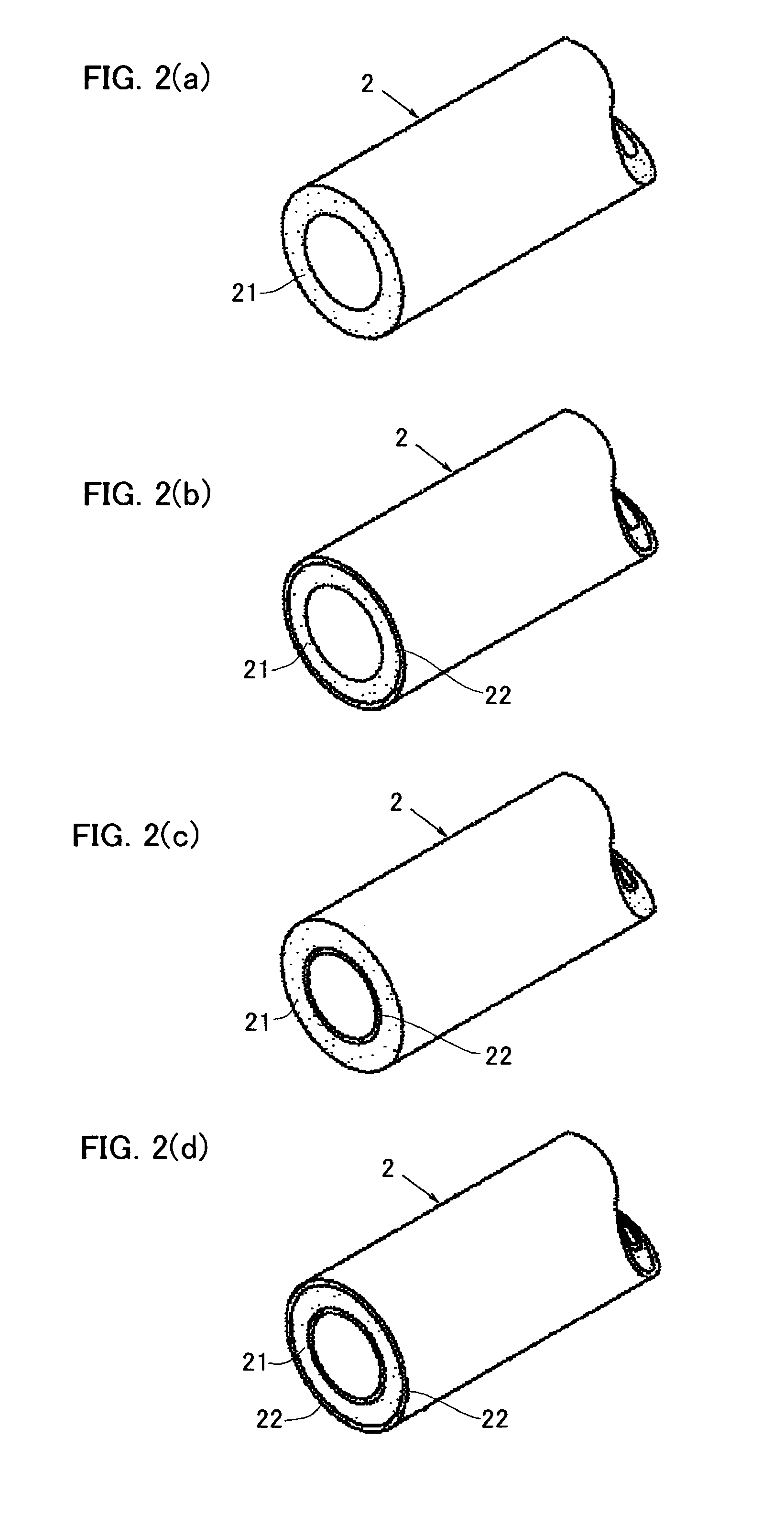Method of forming hollow foam moldings
a hollow foam and molding technology, applied in the field of hollow foam molding, can solve the problems of insufficient lightness in weight, no methods are currently known in the art, and the molding obtained with this method,
- Summary
- Abstract
- Description
- Claims
- Application Information
AI Technical Summary
Benefits of technology
Problems solved by technology
Method used
Image
Examples
example 1
[0080]A hollow foam molding having a maximum width of 180 mm in the direction perpendicular to the extrusion direction was produced using a mixture of Polypropylene A and Polypropylene B (mixing weight ratio A / B was 20:80 as shown in Table 2) as a polypropylene resin. The equilibrium compliance Jeo and swell ratio Sw of the polypropylene resin were as shown in Table 2. A foamable melt containing the polypropylene resin, carbon dioxide gas as a blowing agent in an amount as shown Table 2 and a master batch of a cell controlling agent in an amount of 3 parts by weight per 100 parts by weight of the polypropylene resin was extruded from an extruder through a circular die (having a die lip diameter and a maximum die lip clearance shown in Table 2) having a ratio of the die lip diameter to the maximum width of the intended foam molding of 0.44 to obtain a parison. The master batch was composed of 85% by weight of low-density polyethylene, 5% by weight of sodium stearate and 10% by weight...
PUM
| Property | Measurement | Unit |
|---|---|---|
| thickness | aaaaa | aaaaa |
| density | aaaaa | aaaaa |
| wall thickness | aaaaa | aaaaa |
Abstract
Description
Claims
Application Information
 Login to View More
Login to View More - R&D
- Intellectual Property
- Life Sciences
- Materials
- Tech Scout
- Unparalleled Data Quality
- Higher Quality Content
- 60% Fewer Hallucinations
Browse by: Latest US Patents, China's latest patents, Technical Efficacy Thesaurus, Application Domain, Technology Topic, Popular Technical Reports.
© 2025 PatSnap. All rights reserved.Legal|Privacy policy|Modern Slavery Act Transparency Statement|Sitemap|About US| Contact US: help@patsnap.com



